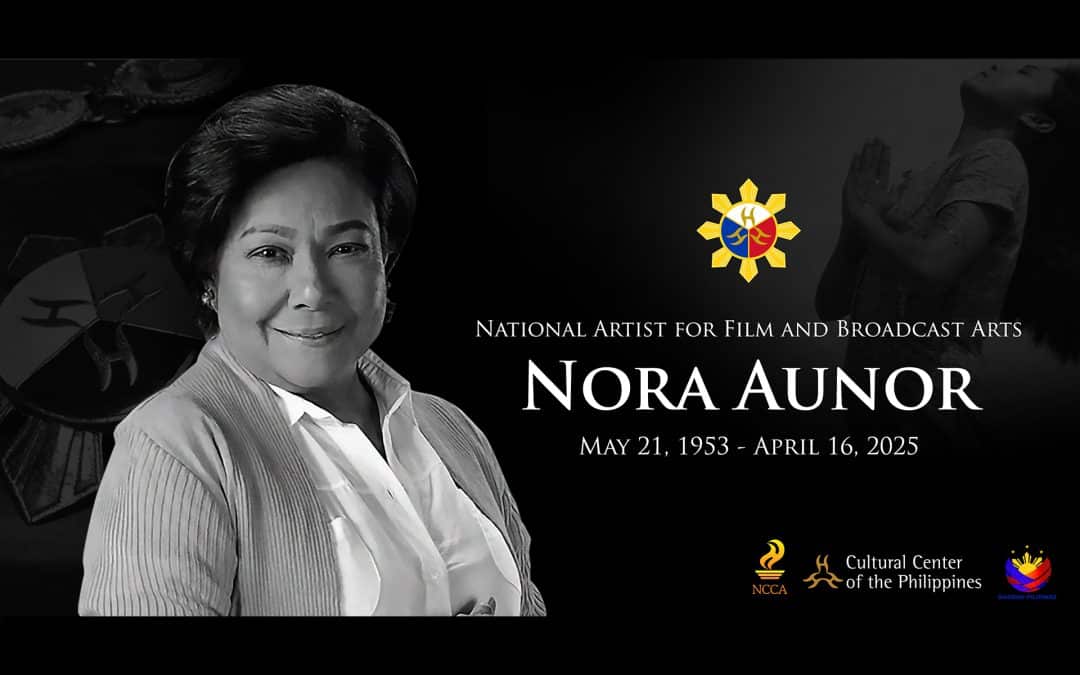Filipinos dedicate ample time to reflect on the passion of Jesus Christ during Holy Week. In fact, they enact centuries-old dramatizations to go above and beyond their faith. As the country’s most authoritative and comprehensive source of artistic and cultural knowledge, the CCP Encyclopedia of Philippine Art (CCP EPA) records these traditions that have shaped Filipino belief, identity, and culture for years.
Learn more about these solemn dramas’ spiritual and artistic significance through these CCP EPA entries.
OSANA

The Palm Sunday osana in Santa Isabel, Malolos City, 1990 (CCP Collections)
Osana is a liturgical playlet depicting Jesus Christ’s triumphant entry into Jerusalem on the first Palm Sunday. Through incorporating songs, this tradition embellishes on the Roman Catholic ritual of the procession and blessing of the palms.
In Malolos, Bulacan, the palaspas (coconut palm fronds) decorate the church and are blessed by priests. Young girls in white are accompanied by a local band. They perform the secular versions of the Palm Sunday antiphon, “Hossana to the Son of David, Blessed is he who comes in the name of the Lord.”
HUDAS

Hudas, the ritual burning of an effigy of Judas Iscariot on Palm Sunday, Santa Rita, Pampanga, 1987 (CCP Collections)
Condemning the betrayal Jesus Christ suffered from, Hudas is the ritual of burning Judas Iscariot’s effigy. It is usually held on the morning of Black Saturday or Easter Sunday in Pampanga, Bulacan, and Cebu. It is typically used to expound on the notion that good always prevails.
In Santa Rita, Pampanga, the statue of Hudas is framed, attacked, and destroyed with firecrackers. Devotees in Minglanilla, Cebu, burn Hudas, while those in Mexico, Pampanga, even dress his effigy in trendy pants.
HULING HAPUNAN
Huling Hapunan is an actual supper held to commemorate Jesus Christ’s last meal with his twelve disciples. Through preparing local delicacies, this drama lays out food on a long table on the evening of Maundy Thursday.
Over the years, provinces began their own variation of Huling Hapunan. Gisan, Marinduque presents the play with a priest explaining how the last supper originated from Jewish people giving thanks for their successful journey from Egypt. Groups of women recite verses from Pasyong Genesis. Meanwhile, in Morong, Rizal, couples carry lamb figures representing Jesus Christ in a procession.
SIETE PALABRAS
With his dying breath on the cross, Jesus uttered seven words. Siete Palabras dramatizes these words to further reflect on Christ’s last three hours of suffering. With Dimas and Gestas crucified beside him, churches build life-sized images of Christ on the cross.
The seven last words are recited with sound effects of thunder rolling and lightning striking. In Santa Rita, Pampanga, Christ’s image is laid on the lap of a woman, depicting the Virgin Mary. Filipino devotees would also collect Alagaw leaves or fragrant premna, which are believed to be medicinal.
SALUBONG

Easter Sunday salubong, Cainta, Rizal, 2011 (Photo by Jude Ilagan)
Salubong narrates the meeting of Mater Dolorosa (Sorrowful Mother) and the Risen Christ on the morning of Easter Sunday.
In this playlet, two floats meet halfway at a colorful four-post bamboo or cement structure called “Galilea”. These floats hold images of the Risen Christ and Mater Dolorosa, whose face is covered with a black veil. A band plays, revealing a child portrayed as an angel. Mater Dolorosa is brought directly underneath the angel. The Salubong ends with removing the grieving mother’s veil, symbolizing that her suffering has ended.
THE CCP EPA: PRESERVING THE NATION’S RICHES
These Lenten dramas are long-lived traditions reflecting faith through artistic expression. While expounding on the contributions of religion to the Philippine arts and culture landscape, these dramas hold historical value that needs preservation for the next generations of Filipinos. The CCP EPA keeps true to this commitment, holding the nation’s arts and culture in its pages.
Through the excellent contribution of over 500 esteemed scholars from known universities in the Philippines, and with at least 5,000 articles in its physical version and hundreds of video excerpts in its digital version, the CCP EPA is the most comprehensive resource platform on everything and anything related to Philippine art. It documents all cultural narratives from performances to traditions.
Subscribe to the CCP EPA Digital Edition through its official website epa.culturalcenter.gov.ph/






